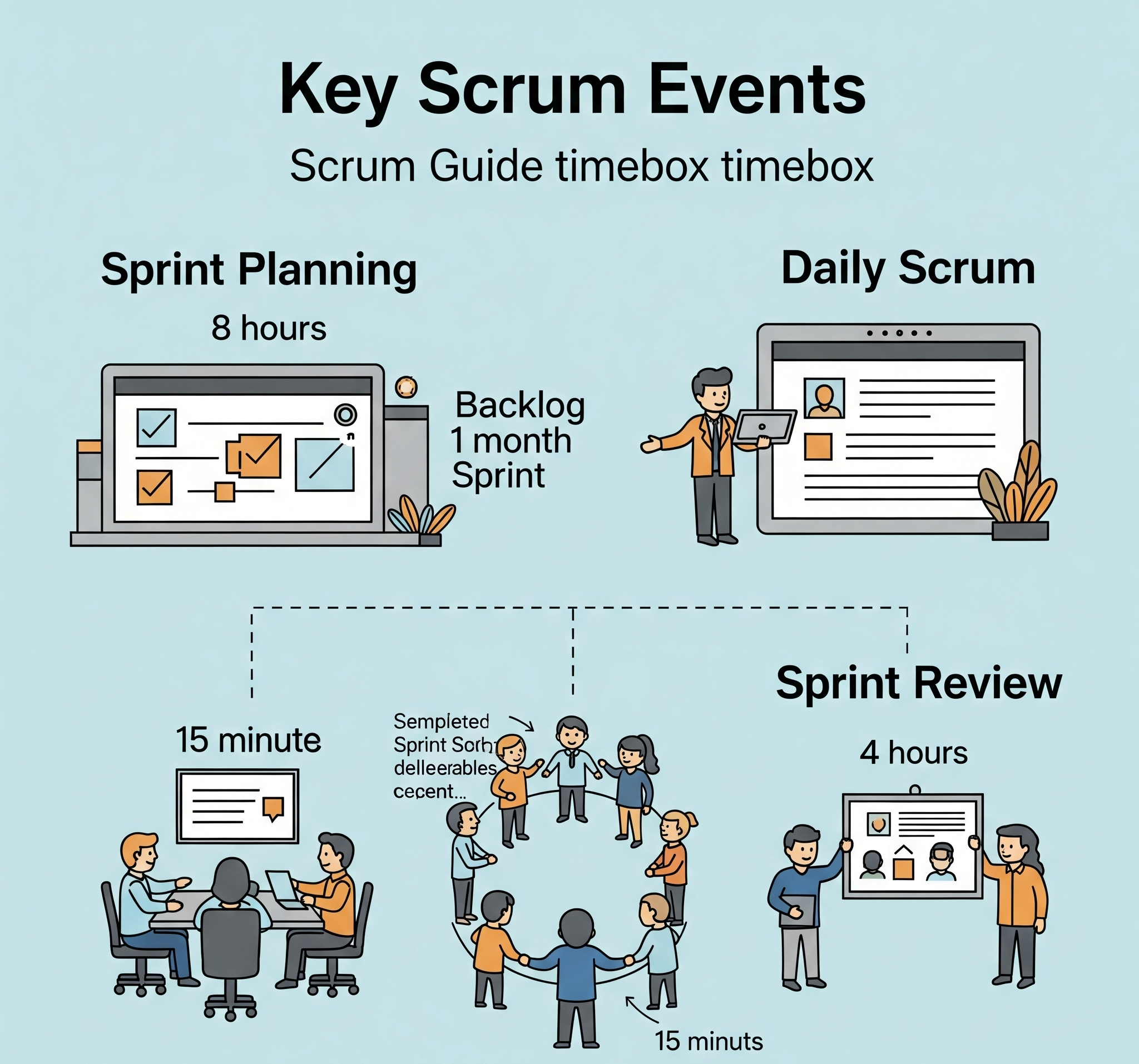
All Scrum Events are timeboxed (having a maximum duration) and serve as formal opportunities to inspect and adapt Scrum artifacts. Failure to operate any events as prescribed results in lost opportunities.
Example: Every one month, the “Heart of Harmony” digital team delivers a new, usable piece of the community portal. If, during the Sprint, a major shift in community needs makes the current Sprint Goal irrelevant, the Product Owner might cancel the Sprint.
Example: The “Heart of Harmony” Scrum Team collaborates for up to eight hours to define the Sprint Goal (e.g., “Enable basic event sign-ups for the community portal”). The Developers then select items and plan the detailed tasks for achieving this goal.
Example: The Developers meet for exactly 15 minutes every working day to synchronize, discuss progress towards “basic event sign-ups,” and adjust their plan for the next 24 hours. The Scrum Master ensures the event takes place and is productive.
Example: The “Heart of Harmony” Scrum Team presents the working “event sign-up” feature to community members and stakeholders for up to four hours. They gather feedback, discuss changing community needs, and collaboratively refine the Product Backlog.
Example: The “Heart of Harmony” Scrum Team spends up to three hours inspecting their collaboration, identifying impediments (e.g., slow feedback loop), and deciding on improvements (e.g., “Implement a new feedback tool”) for the next Sprint.
Not a member yet? Register now
Are you a member? Login now